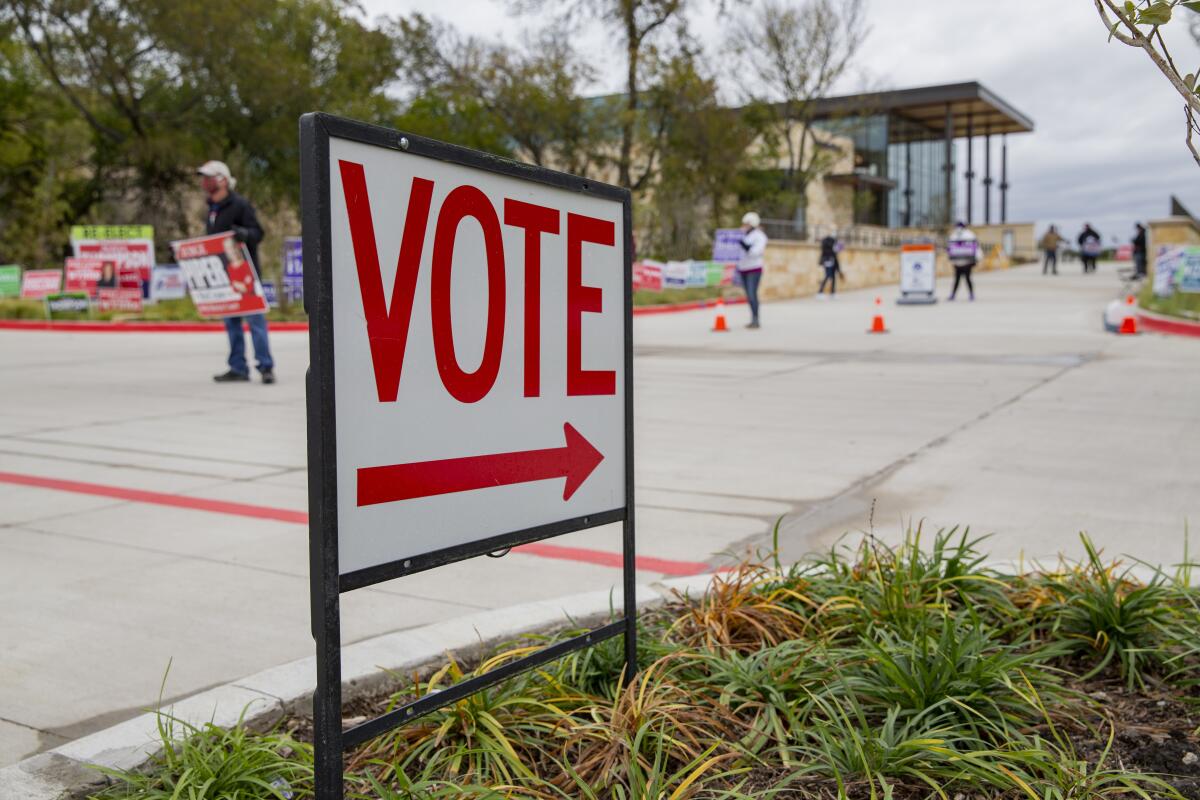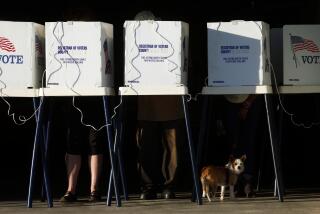Texas’ early voting numbers exceed total of all ballots cast in 2016

- Share via
AUSTIN, Texas — Texans have already cast more ballots in the presidential election than they did during all of 2016, an unprecedented surge of early voting in a state that was once the country’s most reliably Republican, but may now be drifting toward battleground status.
More than 9 million ballots had been cast as of Friday morning in the nation’s second most-populous state, exceeding the 8,969,226 cast in 2016, according to an Associated Press tally of early votes from data provided by Texas officials.
Texas is the first state to hit the milestone of casting more votes than it did in all of 2016. This year’s numbers were aided by Democratic activists who challenged for in court — and won — a one-week extension of early voting amid the COVID-19 pandemic.
Because Texas offers only limited vote-by-mail options compared with the rest of the country, casting an in-person ballot during the early voting period is the primary way to vote for people who don’t want to line up and do so on election day.
Voters in Texas do not register by party affiliation, so no one can be sure until the ballots are counted whether one party or the other will benefit from the surge in turnout.
Still, the fact that the state exceeded its entire vote total for the past presidential cycle with hours still to go in its early voting period, which ends at 7 p.m. Friday, and before millions more people are likely to vote on election day hints at a potential electoral sea change.
For Democrats, anything different from past elections is likely positive. The party hasn’t won a state office in Texas since 1994 — the nation’s longest political losing streak — nor seen one of its presidential nominees carry the state since Jimmy Carter in 1976. The party now believes it has a chance to seize control of the state House, flip as many as six congressional seats and a Senate seat.
President Trump carried Texas against Hillary Clinton in 2016 by a comfortable nine percentage points, even though that was the smallest margin since Republican Bob Dole beat Democratic President Bill Clinton by five points in 1996.
Democratic presidential nominee Joe Biden’s campaign has for months insisted that Texas, with its 38 electoral votes, is among the traditionally conservative states it is looking to flip — though it has been more bullish on other states such as Arizona and North Carolina. Biden’s running mate, California Sen. Kamala Harris, is visiting Fort Worth, Houston and the U.S.-Mexico border town of McAllen on Friday, just four days before election day, spending precious time in the state far later in the campaign cycle than any major national Democrat in decades.
The news may not be all positive for Democrats, however.
The spike in early voting is most apparent in suburban counties around Dallas and in areas outside Austin, especially those south toward San Antonio. One area that has not seen voting rise dramatically, however, is the Rio Grande Valley, where Harris will be. Its population is about 90% Mexican American, and it is among the state’s youngest and fastest-growing areas.
In Hidalgo County, which includes McAllen, early voting has only increased by about 1% compared with 2016, despite the extra week to do so — far below the at least 15% increase in nearly every other large Texas county.
Not turning out voters there — especially when the rest of the state is shattering records — could spell trouble for Biden as well as MJ Hegar, a Democrat trying to topple long-serving Republican Sen. John Cornyn. The area is solidly Democratic, even if many of its Latino voters tend to be slightly more conservative than many of their counterparts in other parts of Texas or the country.
It’s also among the areas in the nation hit hardest by the coronavirus and has seen new cases soar in recent weeks as they have in many parts of the country.
More to Read
Sign up for Essential California
The most important California stories and recommendations in your inbox every morning.
You may occasionally receive promotional content from the Los Angeles Times.













